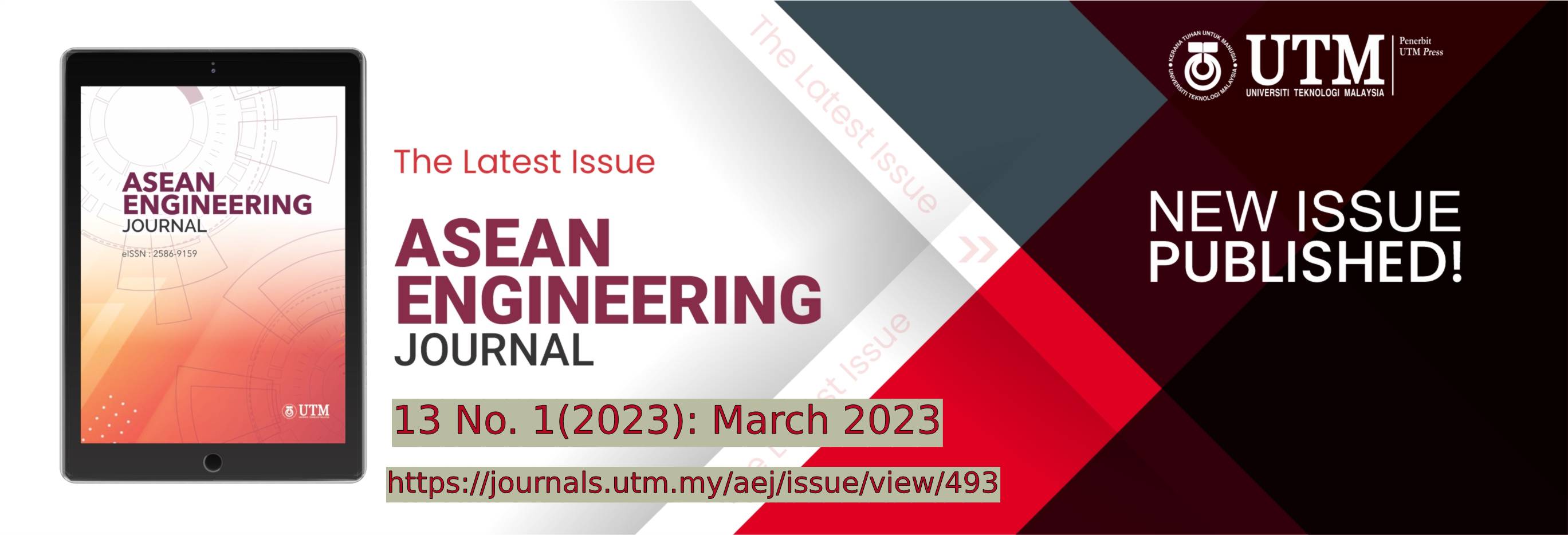CIRCULAR TUNNEL STRUCTURAL ANALYSIS IN SOFT GROUND
DOI:
https://doi.org/10.11113/aej.v13.18386Keywords:
bedded-beam spring model, radial joints, modeling frameworkAbstract
Analytical bedded-beam spring model is most commonly adopted in the tunnel engineering practice due to its simplicity and promising outputs. Despite many well documented literatures exist concerning about the theories and fundamentals of various methods, there is a dearth of information on the modelling framework of a bedded-beam spring and many details are often overlooked in the modelling process. The main aim of this paper is to produce the modelling framework of the bedded-beam spring model in soft ground, for both direct and indirect approaches in considering the effects of segmental joints. Particular emphasis is devoted to the modelling techniques of each components of the structural model which in turn, is able to facilitate the modelling quality and process for the practicing engineers. Reviews on the technical papers of tunneling variables as well as parameters identification for the structural analysis have been first performed followed by the comparison of the consideration adopted in the modelling techniques. Analyses have been carried out to evaluate the structural forces on the tunnel lining and the obtained results are discussed in a comparison with the field measurements and design values of the actual tunneling projects. The results suggested that the direct approach always yields greater bending moments up to i) 26% for 6+1 ring configuration and ii) 21% for 5+1 ring configuration compared to that of the indirect approach. With the presence of more number of radial joints, the differences between the approaches have the tendency to be greater. With the validated models, parametric studies including tunnel lining flexibility ratio, compressibility ratio and the soil lateral earth pressure coefficient have been performed to provide better insight on the relative importance of each of the parameters. The results of the studies suggested that with the increase in flexibility ratio, the difference between the direct and indirect approach has shown to increase from 10% to 28%. However, insignificant influence has been observed on the axial forces regardless of the joint consideration approach a well as the compressibility ratio.
References
Gruebl, F. 2006. Modern design aspects of segmental lining. in CPT-ITA Congress.
Duddeck, H. and Erdmann, J. 1983. Structural design models for tunnels: Tunnelling 82, proceedings of the 3rd international symposium, Brighton, 7–11 June 1982, P83–91. Publ London: IMM, 1982, International Journal of Rock Mechanics and Mining Sciences & Geomechanics Abstracts, 20(1), p. A15, 1983/02/01/.
Schmid, H. 1926. Statische Probleme des Tunnel- und Druckstollenbaues und ihre gegenseitigen Beziehungen. Berlin: Springer.
Voellmy, A. 1937. Eingebettete rohre. ETH Zurich.
Morgan, H. 1961. A contribution to the analysis of stress in a circular tunnel. Geotechnique, 11(1): 37-46.
Schulze, H. and Duddeck, H. 1964. Spannungen in schildvorgetriebenen Tunneln. Beton-und Stahlbetonbau, 59(8): 169-175.
Windels, R. 1966. Spannungstheorie zweiter Ordnung für den teilweise gebetteten Kreisring. Die Bautechnik 43 (1966), H. 8, S. 265–274.
Windels, R. 1967. Kreisring im elastischen Kontinuum. Der Bauingenieur Bd, 4: 429.
Muir Wood, A. 1975. The circular tunnel in elastic ground. Géotechnique, 25(1): 115-127.
Muir Wood, A. 1976. Discussion: The circular tunnel in elastic ground. Géotechnique. 26(1) : 231-237.
Duddeck, H. and Erdmann, J. 1985. Structural design models for tunnels in soft soil. Underground Space;(United States), vol. 9.
Blom, . 2002. Design philosophy of concrete linings for tunnels in soft soils. TU Delft, Delft University of Technology.
Oreste, P. 2007. A numerical approach to the hyperstatic reaction method for the dimensioning of tunnel supports. Tunnelling and Underground space technology, 22(2): 85-205.
Ngan Vu, M., Broere, W. and Bosch, J.W. 2017. Structural analysis for shallow tunnels in soft soils. International Journal of Geomechanics, 17(8): 04017038.
Zlatanović, E., Šešov, V., Lukić, D. Č., Prokić, A., and Trajković-Milenković, M. 2017. Tunnel–ground interaction analysis: Discrete beam–spring vs. continuous fe model. Technical Gazette, 24(1): 61-69.
Guan, Z., Deng, T., Wang, G. and Jiang, Y. 2015. Studies on the key parameters in segmental lining design. Journal of Rock Mechanics and Geotechnical Engineering, 7(6): 674-683.
Paul, S., Hendron, A., Cording, E., Sgouros, G. and Saha, P. 1983. Design Recommendations for Concrete Tunnel Linings: Volume II. Summary of Research and Proposed Recommendations. United States. Urban Mass Transportation Administration.
Bakker, K. J. and Blom, C. 2009. Ultimate limit state design for linings of bored tunnels. Geomechanics and Tunnelling, 2(4): 345-358.
Bakker, K. 2003. Structural design of linings for bored tunnels in soft ground. Heron, 48(1): 33-64.
Bakker, K., Leendertse, W., JOVANOVIC, P. and VAN OOSTERHOUT, G. C. 2000. Monitoring: Evaluation of stresses in lining of the Second Heinenoord Tunnel. in Geotechnical aspects of underground construction on soft ground, 197-202.
Hashimoto, T., Nagaya, J., Konda, T. and Tamura, T. 2002. Observation of lining pressure due to shield tunneling. in Geotechnical aspects of underground construction in soft ground, 119-124.
Kuriki, M. 2020. Design and construction of first bored tunnel under Ho Chi Minh City Metro Line 1 in Vietnam. Geotechnics for Sustainable Infrastructure Development, Singapore, 221-228: Springer Singapore.
Hieu, N. T., Giao, P. H. and Phien-wej, N. 2020. Tunneling induced ground settlements in the first metro line of Ho Chi Minh City, Vietnam. in Geotechnics for Sustainable Infrastructure Development: Springer, 297-304.
Leonhardt, F. and Reimann, H. 1965. Betongelenke: Versuchsbericht; Vorschläge zur Bemessung und konstruktiven Ausbildung. Kritische Spannungszustände des Betons bei mehrachsiger, ruhender Kurzzeitbelastung. Ernst.
Do, N.A., Dias, D., Oreste, P. and Djeran-Maigre, I. 2013. 2D numerical investigation of segmental tunnel lining behavior. Tunnelling and Underground Space Technology, 37: 115-127.
Janssen, P. 1983. Tragverhalten von Tunnelausbauten mit Gelenktübbings, Report-No. 83-41 University of Braunschweig, Department of civil engineering. Institute for structural analysis.
British Standard Institution. 2002. Eurocode 0: Basis of structural design. European Standard.
Swee, C., Dazhi, W., Hong, N.B. and Fok, P. 2010. Engineering Group Civil Design Criteria for Road and Rail Transit Systems.
















